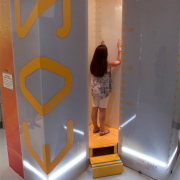Spinal mobility and muscle function in middle-aged patients treated for early onset idiopathic scoliosis: compared with untreated and treated adolescent onset patients
Every year, the Italian Scoliosis Study Group selects the best published papers on conservative spine treatment from the global scientific literature.
Here is the abstract from one of these papers.
Spinal mobility and muscle function in middle-aged patients treated for early onset idiopathic scoliosis: compared with untreated and treated adolescent onset patients
Karin Romberg, Aina Danielsson, Monika Fagevik Olsén, Gunilla Kjellby-Wendt
Spine Deform. 2022 Mar 23.PMID: 35091992 doi: 10.1007/s43390-021-00466-5
ABSTRACT
Purpose: To determine long-term outcome in terms of spinal range of motion (ROM) and trunk muscle endurance (TME) patients treated for idiopathic scoliosis, diagnosed before the age of ten, were evaluated and compared with untreated or treated patients with idiopathic scoliosis with adolescent onset (AIS).
Methods: Sixty-three braced and 53 operated patients underwent examination of spinal ROM and TME. Validated questionnaires were used for evaluation of back function.
Results: A total of 116 patients were examined 26.5 years after treatment. Braced EOS patients had longer bracing time and operated EOS patients had longer fusions compared to the respective AIS groups. Braced EOS patients had similar total ROM (thoracic ROM 40°, lumbar ROM 78°) and TME (trunk flexors 140 s, trunk extensors 255 s) as untreated AIS patients (thoracic ROM 34°, lumbar ROM 88°, trunk flexor endurance 158 s, trunk extensor endurance 234 s). Braced patients also had significantly better results than braced AIS patients. Operated EOS patients were slightly but significantly stronger and more mobile compared to AIS peers. The lumbar ROM was found to affect the back function in the operated EOS group (Oswestry Questionnaire, rs = 0.49, p < 0.001).
Conclusions: The braced EOS patients had mostly similar muscle strength and mobility as the untreated but younger AIS group, while the braced AIS group showed reductions of both strength and mobility. Similar significant, but small, differences were also found between operated EOS and AIS patients. Especially for muscle strength were findings at a level that would be of significant clinical importance.
Levels of evidence: III.
Keywords: Idiopathic scoliosis; Long term; Muscle function; Spinal mobility.




Leave a Reply
Want to join the discussion?Feel free to contribute!